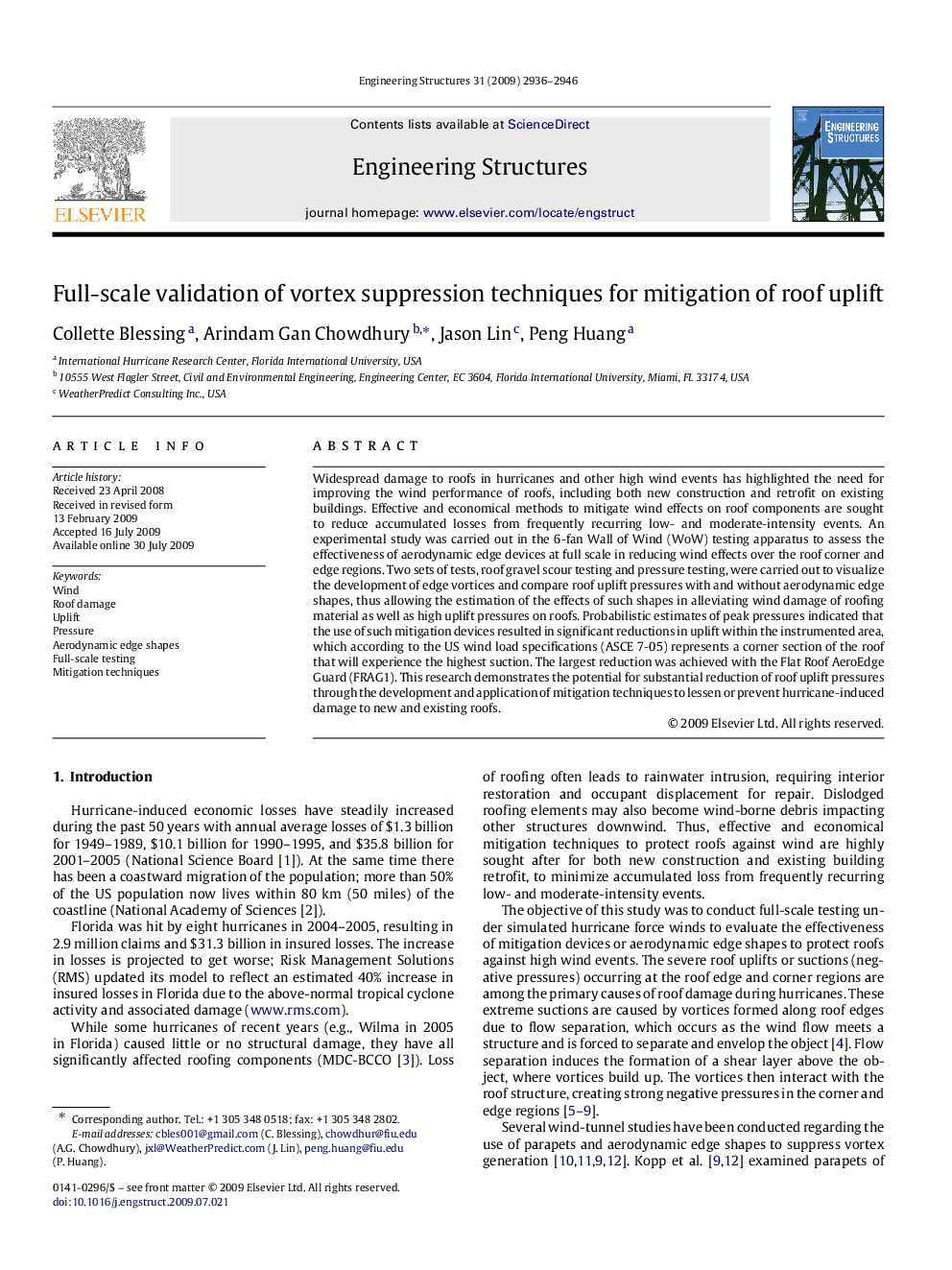| Article ID | Journal | Published Year | Pages | File Type |
|---|---|---|---|---|
| 268348 | Engineering Structures | 2009 | 11 Pages |
Widespread damage to roofs in hurricanes and other high wind events has highlighted the need for improving the wind performance of roofs, including both new construction and retrofit on existing buildings. Effective and economical methods to mitigate wind effects on roof components are sought to reduce accumulated losses from frequently recurring low- and moderate-intensity events. An experimental study was carried out in the 6-fan Wall of Wind (WoW) testing apparatus to assess the effectiveness of aerodynamic edge devices at full scale in reducing wind effects over the roof corner and edge regions. Two sets of tests, roof gravel scour testing and pressure testing, were carried out to visualize the development of edge vortices and compare roof uplift pressures with and without aerodynamic edge shapes, thus allowing the estimation of the effects of such shapes in alleviating wind damage of roofing material as well as high uplift pressures on roofs. Probabilistic estimates of peak pressures indicated that the use of such mitigation devices resulted in significant reductions in uplift within the instrumented area, which according to the US wind load specifications (ASCE 7-05) represents a corner section of the roof that will experience the highest suction. The largest reduction was achieved with the Flat Roof AeroEdge Guard (FRAG1). This research demonstrates the potential for substantial reduction of roof uplift pressures through the development and application of mitigation techniques to lessen or prevent hurricane-induced damage to new and existing roofs.
